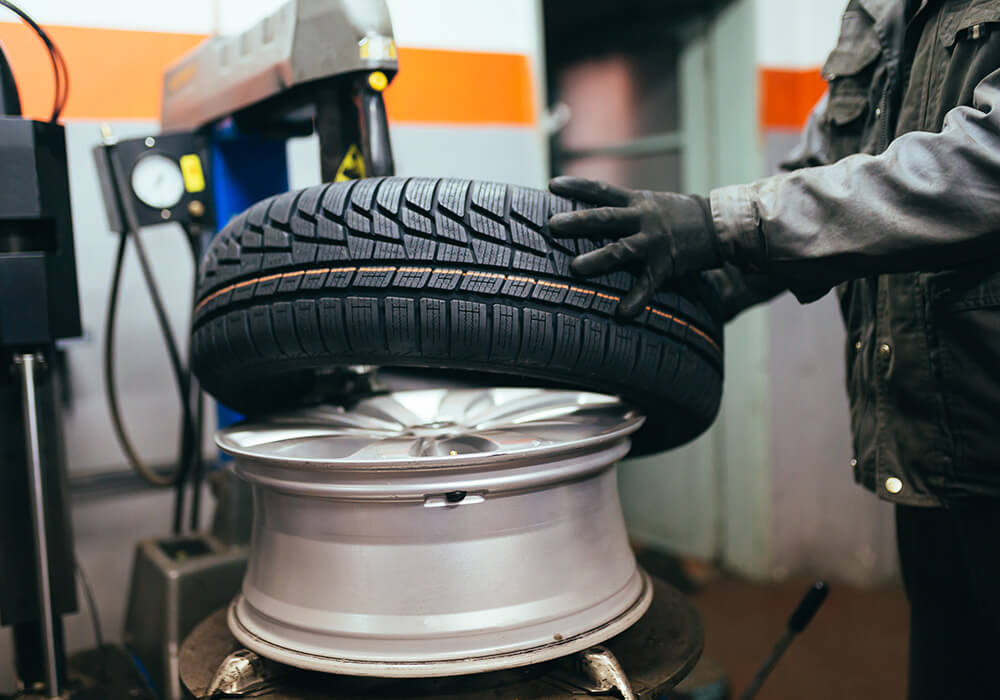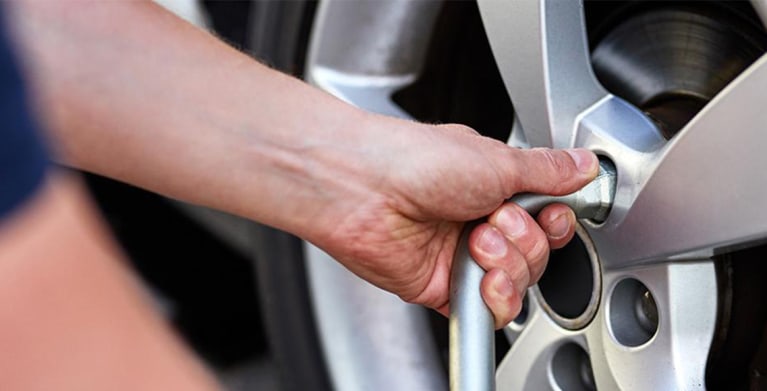Morris Tires: Your Destination for GMC Tires Service Excellence
Morris Tires: Your Destination for GMC Tires Service Excellence
Blog Article
Tire Service: The Influence of Climate Condition
When it comes to guaranteeing ideal efficiency and security on the roadway, comprehending the impact of weather condition problems on tire service is essential. GMC Tire Service. In this conversation, we will discover the complex connection in between weather conditions and tire service, dropping light on the relevance of weather-specific tire upkeep practices and factors to consider.
Heat and Tire Performance
When exposed to high temperatures, tires experience changes in performance that can considerably influence lorry safety and security and handling. The warm produced from long term driving or warm weather conditions triggers the tire rubber to soften, leading to decreased tread life and raised wear.

Cold Weather Effects
Cold weather conditions can have a considerable influence on tire efficiency and security. In cool weather, tires may additionally lose air stress more quickly, which can affect dealing with and gas performance.
To mitigate the impacts of winter on tires, it is crucial to on a regular basis check tire pressure and inflate them to the manufacturer's recommended levels. Utilizing winter months or all-season tires made for chilly weather condition problems can also improve grip and grip on icy or snowy roads. Appropriate tire upkeep, consisting of regular evaluations for wear and damages, ends up being much more vital during colder months to ensure optimum efficiency and safety.
Rainy Issues Effect
Tires with damaged treads are a lot more prone to hydroplaning, where a layer of water develops up in between the tire and the road surface area, leading to loss of grip. To fight this, drivers must frequently check their tires for adequate step depth and think about spending in tires specifically made for damp conditions.
Furthermore, stormy climate can likewise lower exposure, making it testing for drivers to see the road ahead clearly (GMC Tire Service). In such conditions, it is vital to adjust driving speeds appropriately and keep a risk-free complying with range to permit for sudden quits. Appropriately filled with air tires can likewise help in preserving control on damp roadways by offering far better handling and hold
Snow and Tire Safety
Snow-covered roads pose special challenges for chauffeurs, highlighting the importance of proper tire option and upkeep. When driving in snowy problems, having the appropriate tires can make a substantial distinction in safety and performance. Wintertime tires are created with unique rubber substances and step patterns to give far better traction on snow and ice contrasted to all-season tires. The much deeper treads and sipes of wintertime tires help grip the road much better, decreasing the risk of gliding and slipping.

Moreover, drivers need to take into consideration setting up tire chains in severe snowy conditions. Tire chains supply added grip by clutching the snow and ice, boosting stability and control. It is important to comply with producer directions when setting up and using tire chains to protect against damage to the tires and lorry (GMC Tire Service). By picking the right tires, keeping correct inflation, and taking into consideration added traction aids like tire chains, chauffeurs can enhance their safety and security when navigating snow-covered roads.
Weather-Related Tire Upkeep
When confronted with different weather, correct tire maintenance ends up being a crucial facet of vehicle security and performance. Weather-related tire maintenance includes a variety of practices targeted at guaranteeing ideal tire function and longevity in different climate scenarios. One crucial facet of weather-related tire maintenance is tire stress policy. Changing temperature levels can create tire stress to vary, impacting traction and fuel performance. On a regular basis changing and examining tire stress according to maker recommendations is important for risk-free driving in changing weather. Additionally, tire walk deepness plays a considerable duty in managing various climate elements. Tires with adequate tread deepness offer much better grasp on damp or icy roads, reducing the risk of hydroplaning or skidding. When step wear reaches a certain depth is crucial for preserving grip and security in negative Home Page weather, checking tire walk routinely and changing tires. By prioritizing weather-related tire upkeep, chauffeurs can boost safety and security, improve lorry efficiency, and prolong the life-span of their tires.
Conclusion
In final thought, weather conditions have a significant influence on tire efficiency and safety. From heat affecting tire stress and put on to cold weather reducing traction, it is necessary to take into consideration the weather condition when maintaining and using tires.
In this discussion, we will certainly discover the complex relationship in between climate problems and tire solution, losing light on the relevance of weather-specific tire maintenance methods and considerations.

Report this page